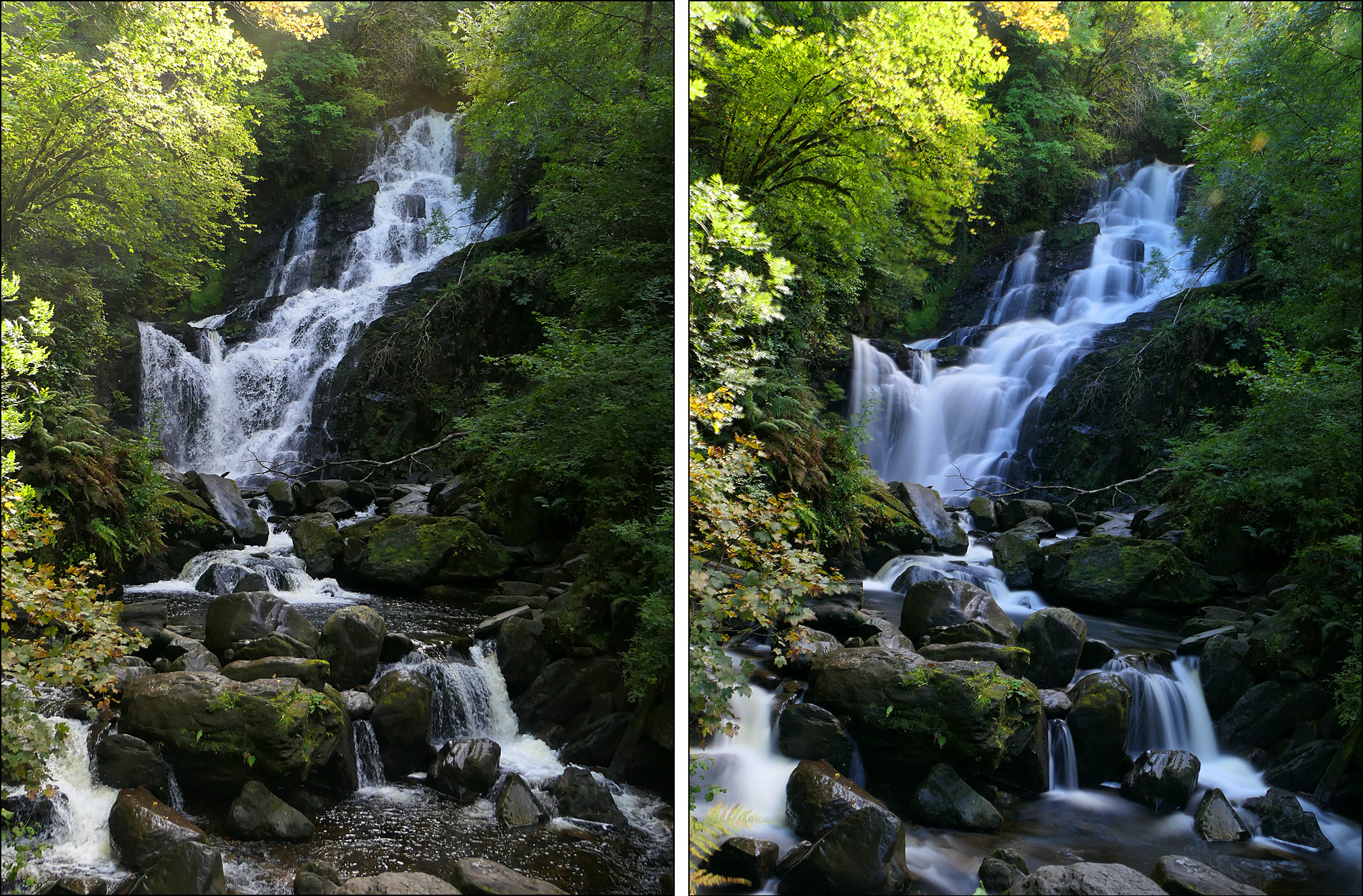A couple of days ago I posted a long-exposure shot of a tiny little waterfall. The long exposure gives the water a velvety texture that long ago became a photographic cliche. You see it a lot in “Serenity” posters and the like.
But as you know, I like photographic cliches. In Southern California that means lots of sunsets, because we have pretty good sunsets there. Ireland doesn’t. The air is just too damn clean. That’s why you haven’t seen an Irish sunset from me yet.¹
Waterfalls are just the opposite. We don’t have a lot of those in Southern California, but you can hardly swing a dead sheep in Ireland without hitting one. So here’s another one: the Torc Waterfall, which is part of the Owengarriff river just before it empties into Muckross Lake. This time you get two views: an ordinary shot on the left and a long exposure on the right:

As I mentioned the other day, the big problem with the long-exposure picture is that it uses a long exposure. It takes about eight seconds to get the velvet effect, and since a typical exposure in daytime is around 1/500th of a second, this means the camera is getting about 4000 times more light than usual. That’s tough to deal with. I can usually drop my ISO setting a couple of stops, and reduce my aperture a couple of stops too. I can also apply a 64x neutral density (gray) filter. Altogether, that reduces the light coming into the camera by about 1000 times. So I’m still overexposed by 4x. Or even more if the sun is shining brightly.
This can be fixed in post-processing, but only up to a point. And it does change the look of the photo. Still, as you can see above, it doesn’t change it too much. In fact, depending on the setting and on your taste in photos, it can actually improve things sometimes.
Here’s another one. It’s a little downstream of the waterfall, and both pictures were taken from the exact same spot:

Anyway, that’s that. I happen to really like long exposure water pictures, and since I don’t get much chance to take them at home I’ve been making up for it here. I’ll post all of them at some point, but I’ll spare you any more for the next few weeks. Probably. After all, I’ve taken about 3,000 photos so far, so I have plenty of other good stuff to put up.
¹But I’ve got one or two good ones. Don’t worry. You’ll see one of them eventually.














